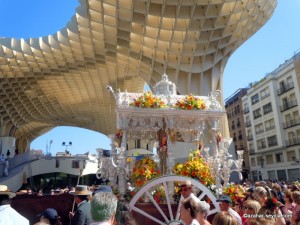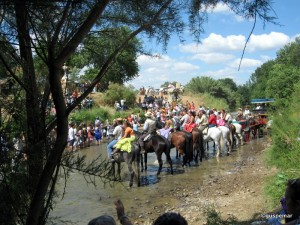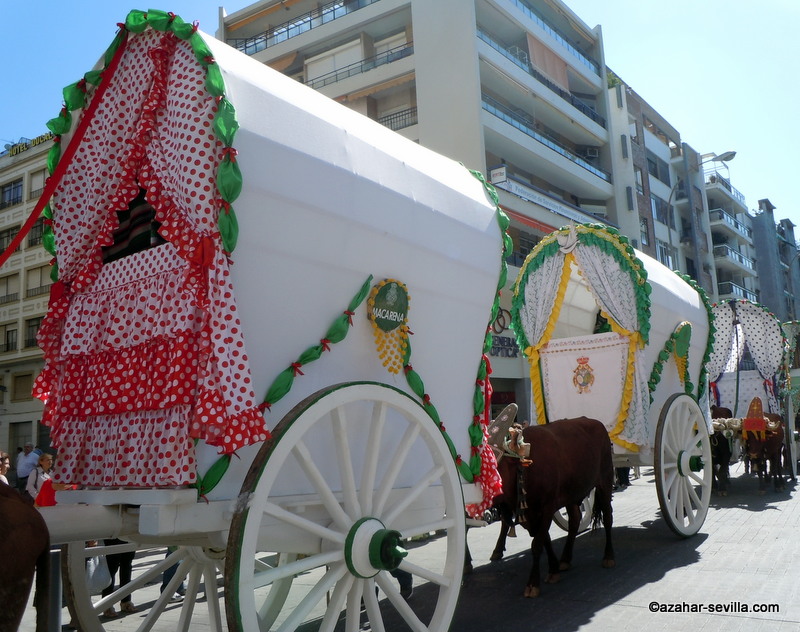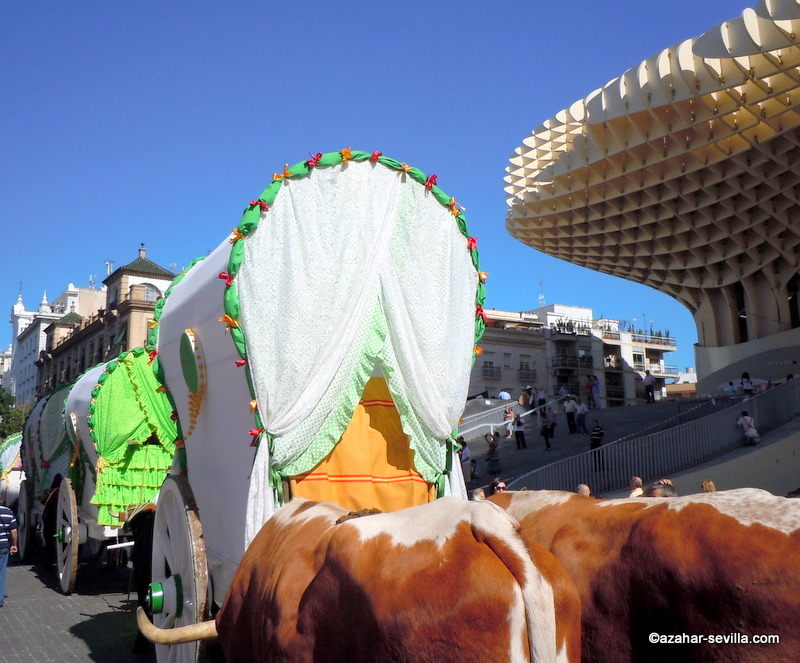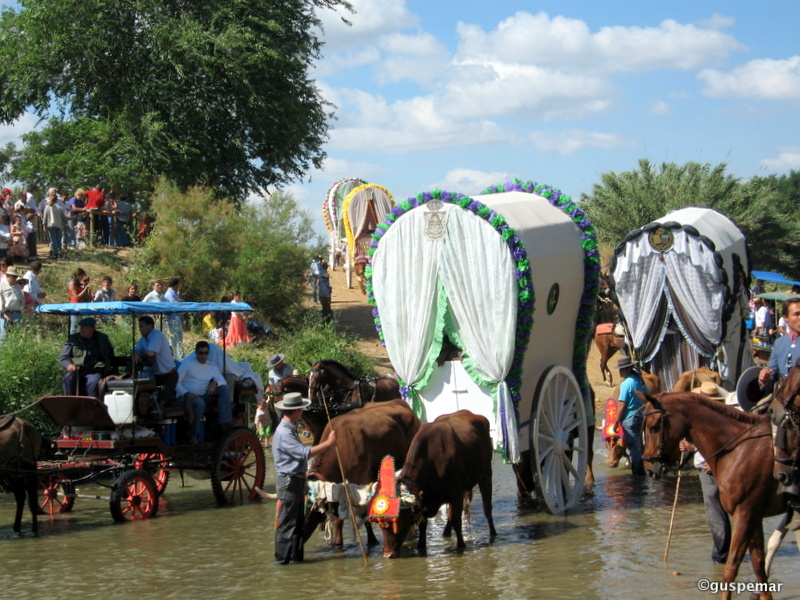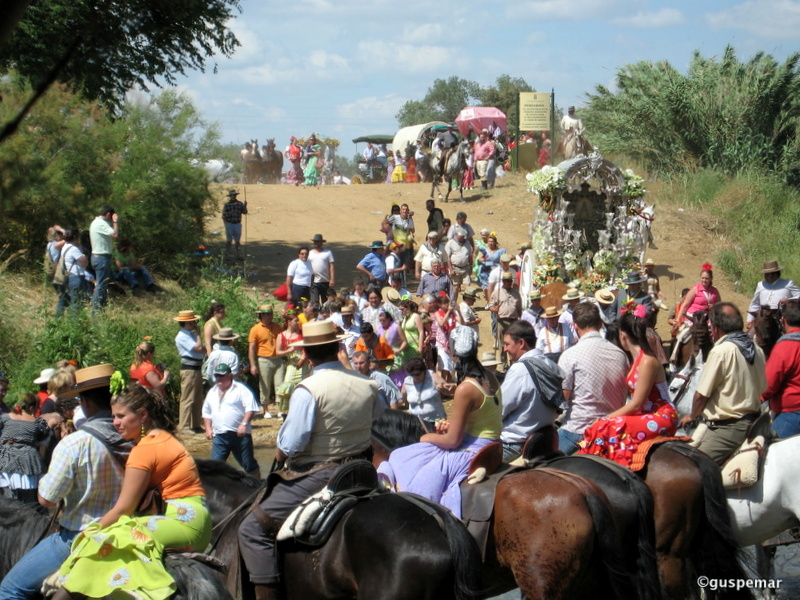Andalucía is justly famous for its fiestas (a word that means both party and holiday), which cover the full range from the solemn (often passionately so), to the riotous and celebratory, especially in spring. So, if you’re planning a holiday in the South of Spain this year, and are thinking of experiencing one of the traditional fairs or some religious processions, now’s the time to be getting out your diaries and making a note of the dates.
The first fiesta of the year (after the Magic Kings on January 5) is definitely the party kind. The Cadiz Carnival, which this year takes place from February 27 to March 9, is the largest on mainland Spain, a ten-day spree of processions, concerts, children’s shows, street theatre and the like, many of them with a satirical edge, the highlight being a singing competition for satirical and humorous songs. Oh, and there’s lots of eating and drinking, too.
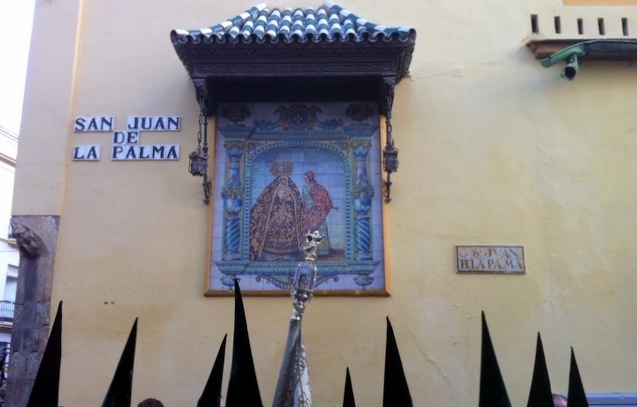 the Macarena procession in Seville
the Macarena procession in Seville
In April it’s the turn of Spain’s biggest religious festival, Semana Santa (Easter Holy Week), which this year is from April 13-20. There will be processions in every city, but the biggest and best (and the most) are in Seville. The atmosphere, with the distinctive brass band music, the elaborate floats, the hooded penitents and all the little rituals, is absolutely unique, but if you’re coming to Seville to see it bear in mind that hotels and apartments can double in price and fill up quickly.
Other religious festivals include Corpus Christi (June 19) and the El Rocio pilgrimage (June 4-9). It’s worth being in town for the departure of the pilgrims in their wild-west style covered wagons drawn by oxen.
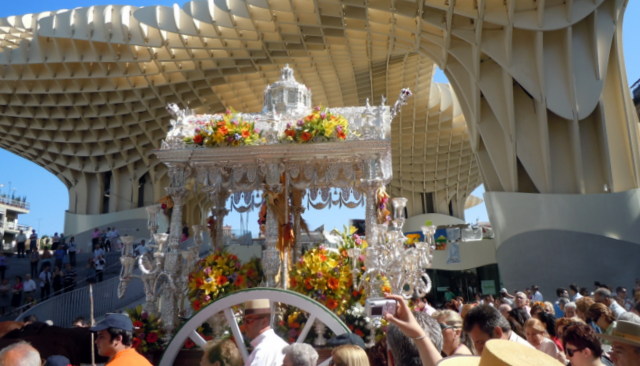 the Seville brotherhood leaving for El Rocio
the Seville brotherhood leaving for El Rocio
In the meantime it’s the turn of the traditional spring fairs. The biggest is Seville’s April Fair (which this year, because Easter falls so late, is actually in May, from the 5th to the 11th), which is immediately followed by the Jerez Fair (May 11 to 18), and a little later by the Cordoba Fair (May 24 to 31). Both of these are easily reached by train or car from Seville. Typical of all the fairs are the little marquees, or casetas, where people gather to eat and drink rebujitos, the traditional sherry and 7-Up cocktails, horses and carriages, and fairground rides and fast food stalls. They also coincide with the local bullfighting season too. The Seville casetas are mostly private, so if you don’t know anyone who is a member of one the Jerez and Cordoba fairs will be more fun and friendlier. The Malaga Fair is a bit later, running from August 16-25, and has more daytime activities away from the Fairground itself, including a re-enactment of the fall of Moorish Malaga to the Christians.
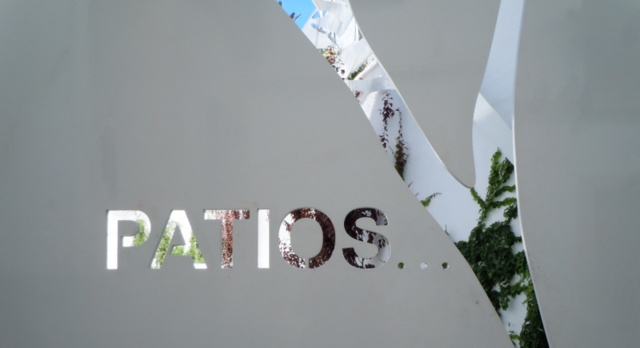 the Patios of Cordoba
the Patios of Cordoba
Two other festivals that are worth seeing are the Patio Festival, or Festival of the Flowers, in Cordoba (May 8-19), which takes the form of a competition for the best patios and balconies in the city, and the city is full of the colours and scents of the spring flowers, and the Fiesta del Carmen in Malaga on July 16, which celebrates the patron saint of fishermen with an unusual water-borne procession.
Veoapartment has holiday rental apartments in both Seville and Malaga, that make a perfect base for experiencing these fabulous Andalusian festivals. For a complete listing of upcoming events in 2014 check out our city information pages for: Seville and Malaga.
